硅酸鹽學(xué)報(bào)論文撰寫(xiě)范例
時(shí)間: 分類(lèi):技巧指導(dǎo) 次數(shù):
硅酸鹽學(xué)報(bào)是北大核心,CSCD,EI收錄刊物,由中國(guó)科學(xué)技術(shù)協(xié)會(huì)主管,中國(guó)硅酸鹽學(xué)會(huì)主辦,由《硅酸鹽學(xué)報(bào)(中英文)》編輯部編輯出版,是無(wú)機(jī)非金屬材料研究領(lǐng)域的綜合性學(xué)術(shù)期刊。這本學(xué)報(bào)論文撰寫(xiě)要求嚴(yán)格,摘要和文章正文都有嚴(yán)格的要求,下面分享詳細(xì)的撰寫(xiě)范例:

一、“英文長(zhǎng)摘要”格式要求(綜述)
1、篇幅:英文長(zhǎng)摘要篇幅要求在800~1000字(單詞數(shù))。
2、結(jié)構(gòu):
(1) 題目、作者和單位(與中文信息對(duì)應(yīng)的英文信息)
(2) 英文長(zhǎng)摘要正文:
1)敘述本文研究領(lǐng)域的重要性和重要研究進(jìn)展;
2)結(jié)論與展望(Summary and prospects)
(3) 關(guān)鍵詞(Keywords)。
3、不要加參考文獻(xiàn)。如果有引用其他文章,建議作者轉(zhuǎn)述。
4、請(qǐng)刪除原英文摘要。
5、“英文長(zhǎng)摘要”題目中的單詞首字母請(qǐng)大寫(xiě)(除介詞外)。
6、 縮寫(xiě)首次出現(xiàn)時(shí)請(qǐng)用英文說(shuō)明全稱(chēng)或者說(shuō)明化學(xué)式。
7、“英文長(zhǎng)摘要”請(qǐng)放在文末,參考文獻(xiàn)列表之后。
二、“英文長(zhǎng)摘要”格式要求(研究論文)
1、篇幅:英文長(zhǎng)摘要篇幅要求在800~1000字(單詞數(shù))。
2、結(jié)構(gòu):
(1) 題目、作者和單位(與中文信息對(duì)應(yīng)的英文信息)
(2) 英文長(zhǎng)摘要正文:
1)研究目的(Introduction)(突出所做工作的重要性和必要性);
2)研究方法(Methods);
3)創(chuàng)新性結(jié)果(Results and discussion);
4)結(jié)論(Conclusions);
(3) 關(guān)鍵詞(Keywords)。
3、不要加參考文獻(xiàn)。如果有引用其他文章,建議作者轉(zhuǎn)述。
4、請(qǐng)刪除原英文摘要。
5、“英文長(zhǎng)摘要”題目中的單詞首字母請(qǐng)大寫(xiě)(除介詞外)。
6、 縮寫(xiě)首次出現(xiàn)時(shí)請(qǐng)用英文說(shuō)明全稱(chēng)或者說(shuō)明化學(xué)式。
7、“英文長(zhǎng)摘要”請(qǐng)放在文末,參考文獻(xiàn)列表之后
三、兩篇論文摘要范例:
文章1、原位反應(yīng)法制備 Cr2AlC-Fe 復(fù)合材料
陳新華,翟洪祥,王文娟,黃振鶯(北京交通大學(xué),北京 100044)
摘 要:采用原位反應(yīng)法制備了 Cr2AlC-Fe 系復(fù)合材料,并采用熱分析、X 射線(xiàn)衍射、掃描電子顯微鏡和三點(diǎn)彎曲實(shí)驗(yàn),研究了原位反應(yīng)的燒結(jié)工藝對(duì)產(chǎn)物和顯微結(jié)構(gòu)的影響,以及對(duì)原料中 Cr2AlC 的含量對(duì)復(fù)合材料性能的影響。結(jié)果表明:通過(guò)高溫原位反應(yīng),原料中 Cr2AlC 發(fā)生了分解,形成了網(wǎng)絡(luò)狀陶瓷增強(qiáng)結(jié)構(gòu),所制備的復(fù)合材料具有較好的強(qiáng)度和韌性,且隨著 Cr2AlC 含量的增加,復(fù)合材料的強(qiáng)度也在增加,但斷裂韌性逐漸下降。當(dāng)Cr2AlC 的體積分?jǐn)?shù)達(dá)到 30%時(shí),復(fù)合材料的抗彎強(qiáng)度達(dá) 1 417 MPa。
關(guān)鍵詞:復(fù)合材料;原位反應(yīng);燒結(jié);彎曲行為
中圖分類(lèi)號(hào):TB333 文獻(xiàn)標(biāo)志碼:A 文章編號(hào):0454–5648(2013)01–
Fabrication of Cr2AlC Fe-based Composites by in-situ Reaction Method
CHEN Xinhua,ZHAI Hongxiang,WANG Wenjuan,HUANG Zhenying
(Center of Materials Science and Engineering, School of Mechanical and Electronic Control Engineering,
Beijing Jiaotong University, Beijing 100044)
Abstract: A Cr2AlC-Fe composite, which could have potential applications in nuclear energy industry as engineering materials, was synthesized by an in-situ reaction method. The in-situ reactions between Cr2AlC and Fe at different temperatures and ratios were analyzed by thermogravimetric analysis-differential thermal analysis, X-ray diffraction and scanning electron microscopy, respectively.
The effect of s Cr2AlC content on the bending behaviors was investigated. The results show that Cr2AlC can in-situ react with Fe, and decompose to form chromium carbide. The synthesized composite exhibits a higher flexural strength and a greater fracture toughness at room temperature.
Key words: based composites; in situ reaction; sintering; bending behaviors
文章2、錳氧化物在水系電池中的研究進(jìn)展與挑戰(zhàn)
杜玲玉 1,畢嵩山 2,牛志強(qiáng) 2(1. 煙臺(tái)大學(xué)環(huán)境與材料工程學(xué)院,山東 煙臺(tái) 264005;2. 南開(kāi)大學(xué)化學(xué)學(xué)院,天津 300071)
摘 要:水系二次電池因其安全性高、成本低以及對(duì)環(huán)境友好等特點(diǎn),在大規(guī)模儲(chǔ)能領(lǐng)域展現(xiàn)出廣闊的應(yīng)用前景。電極材料作為電池的關(guān)鍵組成部分,其性質(zhì)直接影響電池電化學(xué)性能。錳氧化物具有晶體結(jié)構(gòu)豐富、理論比容量高、氧化還原電位高、成本低等優(yōu)勢(shì),被認(rèn)為是最具發(fā)展?jié)摿Φ恼龢O材料之一。然而,錳氧化物存在導(dǎo)電性差、結(jié)構(gòu)不穩(wěn)定、錳溶解等問(wèn)題,使電池面臨倍率和循環(huán)性能差的嚴(yán)峻挑戰(zhàn),限制了其實(shí)際應(yīng)用。此外,錳氧化物的反應(yīng)機(jī)制較為復(fù)雜。
針對(duì)上述問(wèn)題,本文通過(guò)調(diào)研有關(guān)錳氧化物的文獻(xiàn),首先分析了其晶體結(jié)構(gòu)類(lèi)型和特點(diǎn),進(jìn)一步按照電解液酸度梳理歸納了錳氧化物在(弱)酸性和堿性條件下的反應(yīng)機(jī)制,簡(jiǎn)要闡述了其在水系堿金屬離子、多價(jià)金屬離子以及非金屬離子二次電池體系的研究進(jìn)展,最后對(duì)未來(lái)高性能錳氧化物正極的發(fā)展方向進(jìn)行了展望。
關(guān)鍵詞:水系電池;錳氧化物;晶體結(jié)構(gòu);反應(yīng)機(jī)制
Progress and Challenges of Manganese Oxides in Aqueous Rechargeable Batteries
DU Lingyu1, BI Songshan2, NIU Zhiqiang2
(1. School of Environmental and Material Engineering, Yantai University, Yantai 264005, Shandong, China;
2. College of Chemistry, Nankai University, Tianjin 300071, China)
Extended Abstract
Aqueous rechargeable batteries have great prospects in the field of large-scale energy storage due to their high safety, low cost,and environmental friendliness. As a key component of batteries, electrode materials play important roles on their electrochemical performance. Vanadium oxides, manganese oxides, Prussian blue analogues, and organic materials are often used as active materials in aqueous batteries. Among these materials, vanadium oxides possess a variety of compounds, high theoretical specific capacity, andsuperior cycling performance. However, their redox potential is relatively low, restricting the operating voltage of aqueous batteries.
Moreover, these materials are toxic, which are not conducive in the large-scale applications. Compared with vanadium oxides,Prussian blue analogues have a higher redox potential and a stable structure, but they have some disadvantage of low theoretical specific capacity, resulting in the low energy density of batteries. In contrast, organic materials possess abundant sources, facile structure regulation, and superior sustainability. However, their poor conductivity and low compaction density make it difficult to
prepare high-loading electrodes. Compared with the materials above, manganese oxides have the advantages of diverse crystal structures, high theoretical specific capacity, high redox potential, non-toxicity, and low cost, which are beneficial for constructing high-performance aqueous batteries. Therefore, manganese oxides are considered as a promising electrode material in aqueous batteries. Recent efforts are made in the design of manganese oxides-based aqueous batteries, but the corresponding comprehensive review on this topic is still sparse.
This review firstly analyzed the crystal structure types and characteristics of manganese oxides. According to the connection mode between MnO6 units, the crystal structure of manganese oxides can be divided into one-dimensional tunneled structure (i.e.,α-MnO2, β-MnO2, γ-MnO2, R-MnO2, Todorokite-MnO2), two-dimensional layered structure (i.e., δ-MnO2), and three-dimensional spinel structure (i.e., λ-MnO2, Mn3O4, LiMn2O4, ZnMn2O4). The characteristics of corresponding crystal structure were summarized.
Manganese oxides exhibited unique physical and chemical properties, endowing their wide application as electrode materials in aqueous batteries.
The reaction mechanisms of manganese oxides are rather complex in aqueous batteries, especially for aqueous zinc-ion batteries, which were summarized according to the acidity of electrolytes. In alkaline Zn–MnO2 batteries, MnO2 is firstly converted into MnOOH, and then Mn(OH)2 is formed. As the acidity of the electrolyte decreases, manganese oxides exhibit different electrochemical reactions, mainly including ion insertion–extraction, conversion, and dissolution–deposition (Mn2+/MnO2). The
different electrochemical reaction mechanisms of manganese oxides provide plentiful energy storage chemistry for the design of aqueous battery systems. However, there are also irreversible side reactions and structural distortions in manganese oxides during the cycling process, which hinder their further development.
The application of manganese oxides in aqueous batteries is briefly elaborated, including alkaline-metal-ions (such as Li+, Na+),multivalent-metal-ions (such as Zn2+, Mg2+, Al3+), and non-metallic-ions (such as H+, NH4+) batteries. To address the poor conductivity, unstable structure, as well as manganese dissolution of manganese oxides, nanostructure design, hetero-element doping,defect engineering, and composite construction with other conductive materials are adopted to regulate the electronic structure and alleviate the Jahn–Teller distortion. As a result, the rate capability and cycling stability of manganese oxides-based aqueous batteries are significantly improved.
Summary and Prospects Although significant progress has been achieved in the design of manganese oxides for the electrodes of aqueous batteries, great challenges still remain in the scientific researches and practical application. The reaction mechanisms of manganese oxides are relatively complex, compared with those of other electrode materials. The reaction processes are also different for the same crystal structure. It is thus necessary to conduct the systematic and comprehensive investigation. The detailed structure evolution of manganese oxides could be revealed during electrochemical reaction process through some advanced in-situ characterization techniques (i.e., electrochemical quartz crystal microbalance, cryo-electron microscopy, X-ray photon-electron spectroscopy). The poor structure stability and manganese dissolution of manganese oxides result in the capacity attenuation uponcycling.
The precise structure optimization strategies are urgently needed to suppress the Jahn–Teller distortion and enhance structural stability, such as interface interaction regulation through introducing carbon materials and other functional materials into the composites, valence state adjustment of manganese elements through anionic doping. Furthermore, the development of novel electrolyte systems also plays a crucial role in the improvement of electrochemical performances for manganese oxides-based
aqueous batteries. High-concentrated electrolytes, molecular-crowding electrolytes, hydrated-eutectic electrolytes, and organic/inorganic hybrid electrolytes could reduce free water content and water molecule activity, regulate the solvation structure,which would be beneficial for suppressing manganese dissolution and promoting reaction kinetics. In addition, the diverse reactions of manganese oxides could be also utilized by adjusting the pH value of the electrolytes, thus developing the electrochemical energy
storage devices with a high voltage, high capacity, and high rate capability. The electrochemical performance of manganese oxide electrodes with a high mass loading could be improved by the synergistic effect of material structure design and electrolyte optimization. Finally, some controllable methods of manganese oxides in a largescale could be further developed for the industrial application of aqueous batteries.
Keywords aqueous batteries; manganese oxides; crystal structure; reaction mechanism
上述就是硅酸鹽學(xué)報(bào)論文撰寫(xiě)范例,這本學(xué)報(bào)主要報(bào)道水泥基材料、陶瓷、玻璃、耐火材料、人工晶體、礦物材料、新能源材料、復(fù)合材料等相關(guān)領(lǐng)域的創(chuàng)新性科學(xué)研究成果。同時(shí)也被Scopus數(shù)據(jù)庫(kù)、英國(guó)《科學(xué)文摘》、美國(guó)《化學(xué)文摘》、俄羅斯文摘雜志等收錄,是大家值得投稿的刊物。
熱門(mén)文章閱讀排行榜
- 火災(zāi)煙氣論文文獻(xiàn)39篇
2025-04-21瀏覽量:556
- 珠寶設(shè)計(jì)專(zhuān)業(yè)學(xué)術(shù)論文推薦
2025-04-10瀏覽量:656
- 酶工程相關(guān)論文文獻(xiàn)3篇
2025-04-09瀏覽量:625
- 電子技術(shù)與智能家具相關(guān)論文選題參考
2025-04-07瀏覽量:444
- 一稿多投與重復(fù)發(fā)表界定標(biāo)準(zhǔn)及處理原則
2025-04-02瀏覽量:688
- 精選交通節(jié)能領(lǐng)域論文選題31個(gè),另附論文選題建議
2025-03-31瀏覽量:788
- 電子技術(shù)與智能家具可參考文獻(xiàn)37篇
2025-03-28瀏覽量:570
- 電催化析氫方向新發(fā)表的論文文獻(xiàn)2篇
2025-03-25瀏覽量:783
- 大學(xué)生、社團(tuán)、校園文化相關(guān)學(xué)術(shù)論文文獻(xiàn)40篇
2025-03-24瀏覽量:409
- 1篇標(biāo)準(zhǔn)的核心期刊論文排版格式,word模板
2025-03-20瀏覽量:572
中文核心期刊推薦
-

-
中國(guó)法學(xué)雜志
級(jí)別:CSSCI南大期刊,北大期刊,統(tǒng)計(jì)源期刊
ISSN:1003-1707
刊期:進(jìn)入查看
-
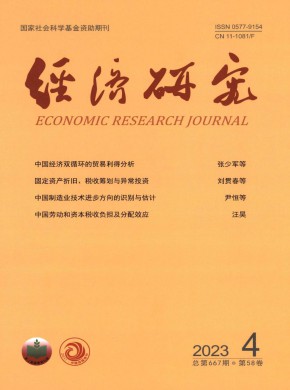
-
經(jīng)濟(jì)研究雜志
級(jí)別:CSSCI南大期刊,北大期刊,統(tǒng)計(jì)源期刊
ISSN:0577-9154
刊期:進(jìn)入查看
-

-
高等工程教育研究雜志
級(jí)別:CSSCI南大期刊,北大期刊,統(tǒng)計(jì)源期刊
ISSN:1001-4233
刊期:進(jìn)入查看
-

-
南京農(nóng)業(yè)大學(xué)學(xué)報(bào)·社會(huì)科學(xué)版雜志
級(jí)別:北大期刊,CSSCI南大期刊
ISSN:1671-7465
刊期:進(jìn)入查看
-

-
新疆師范大學(xué)學(xué)報(bào)·哲學(xué)社會(huì)科學(xué)版雜志
級(jí)別:CSSCI南大期刊,北大期刊,統(tǒng)計(jì)源期刊
ISSN:1005-9245
刊期:進(jìn)入查看
-

-
法學(xué)研究雜志
級(jí)別:CSSCI南大期刊,北大期刊,統(tǒng)計(jì)源期刊
ISSN:1002-896X
刊期:進(jìn)入查看
-
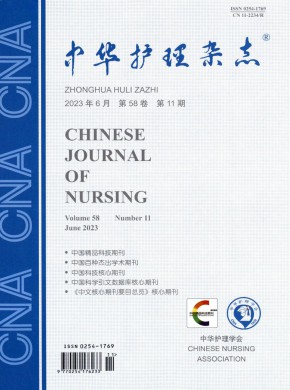
-
中華護(hù)理雜志
級(jí)別:北大期刊,CSCD期刊,統(tǒng)計(jì)源期刊
ISSN:0254-1769
刊期:進(jìn)入查看
-
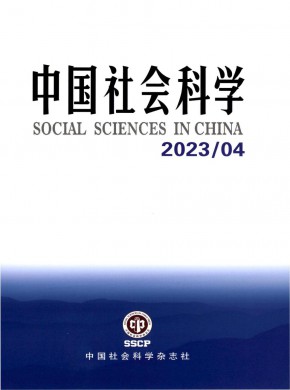
-
中國(guó)社會(huì)科學(xué)雜志
級(jí)別:CSSCI南大期刊,北大期刊,統(tǒng)計(jì)源期刊
ISSN:1002-4921
刊期:進(jìn)入查看
-
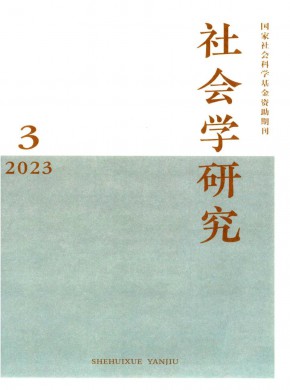
-
社會(huì)學(xué)研究雜志
級(jí)別:CSSCI南大期刊,北大期刊,統(tǒng)計(jì)源期刊
ISSN:1002-5936
刊期:進(jìn)入查看
-
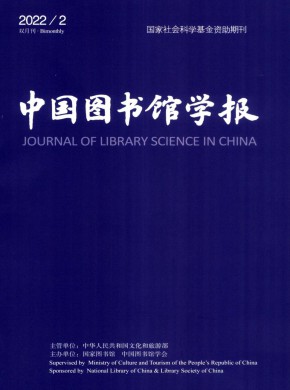
-
中國(guó)圖書(shū)館學(xué)報(bào)雜志
級(jí)別:CSSCI南大期刊,北大期刊,統(tǒng)計(jì)源期刊
ISSN:1001-8867
刊期:進(jìn)入查看
-
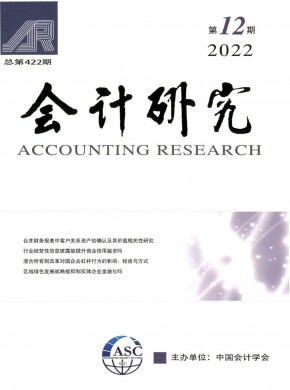
-
會(huì)計(jì)研究雜志
級(jí)別:CSSCI南大期刊,北大期刊,統(tǒng)計(jì)源期刊
ISSN:1003-2886
刊期:進(jìn)入查看
-
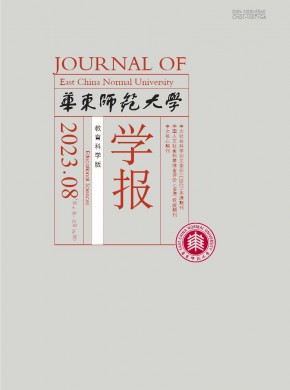
-
華東師范大學(xué)學(xué)報(bào)·教育科學(xué)版雜志
級(jí)別:北大期刊,統(tǒng)計(jì)源期刊,CSSCI南大期刊
ISSN:1000-5560
刊期:進(jìn)入查看
SCI核心期刊推薦
-

-
Scientific Reports
數(shù)據(jù)庫(kù):SCI
ISSN:2045-2322
刊期:進(jìn)入查看
-

-
ACTA RADIOLOGICA
數(shù)據(jù)庫(kù):SCI
ISSN:0284-1851
刊期:進(jìn)入查看
-

-
Materials Today Communications
數(shù)據(jù)庫(kù):SCI
ISSN:2352-4928
刊期:進(jìn)入查看
-

-
APPLIED SURFACE SCIENCE
數(shù)據(jù)庫(kù):SCI
ISSN:0169-4332
刊期:進(jìn)入查看
-

-
PLANT JOURNAL
數(shù)據(jù)庫(kù):SCI
ISSN:0960-7412
刊期:進(jìn)入查看
-

-
SCIENCE OF THE TOTAL ENVIRONMENT
數(shù)據(jù)庫(kù):SCI
ISSN:0048-9697
刊期:進(jìn)入查看
-

-
PLANT DISEASE
數(shù)據(jù)庫(kù):SCI
ISSN:0191-2917
刊期:進(jìn)入查看
-

-
BMC BIOLOGY
數(shù)據(jù)庫(kù):SCI
ISSN:1741-7007
刊期:進(jìn)入查看
-

-
Journal of Materials Research and Technology-JMR&T
數(shù)據(jù)庫(kù):SCI
ISSN:2238-7854
刊期:進(jìn)入查看
-

-
JOURNAL OF WATER PROCESS ENGINEERING
數(shù)據(jù)庫(kù):SCI
ISSN:2214-7144
刊期:進(jìn)入查看

